The vast depths of our oceans hold mysteries that would make the wildest science fiction movie seem tame. While we’ve mapped more of Mars than our own ocean floor, the creatures we do know about are absolutely mind-boggling. From living fossils to animals that defy every rule of biology you thought you knew, the deep sea is home to some of the most bizarre beings on our planet.
The Vampire Squid – Neither Vampire Nor Squid
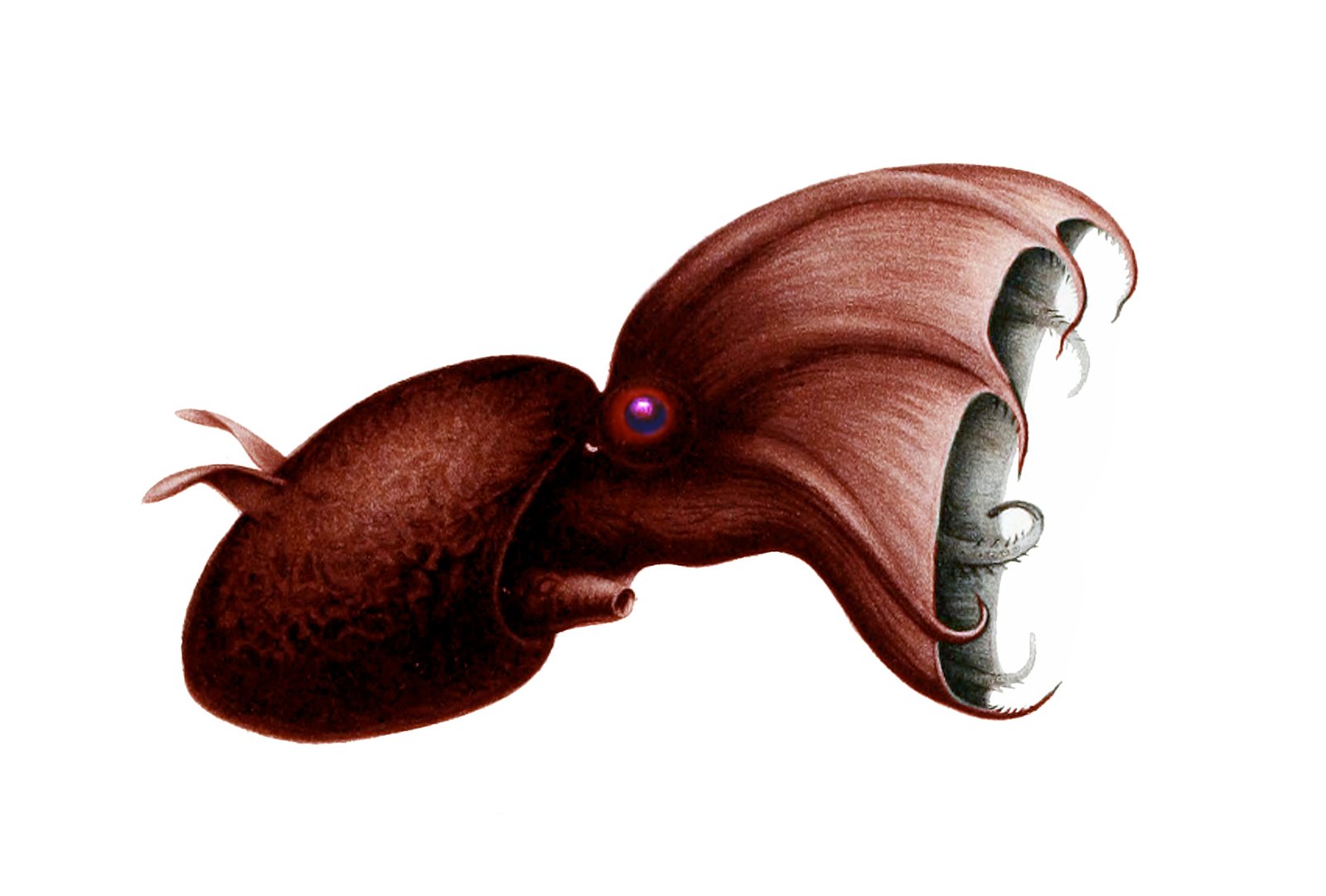
The vampire squid (Vampyroteuthis infernalis, literally ‘vampire squid from hell’) is a small cephalopod found throughout temperate and tropical oceans in extreme deep sea conditions. Despite its terrifying name, this creature is actually quite harmless and doesn’t suck blood at all.
Its 15-centimetre (5.9 in) gelatinous body varies in colour from velvety jet-black to pale reddish, depending on location and lighting conditions. A webbing of skin connects its eight arms, each lined with rows of fleshy spines or cirri; the inner side of this “cloak” is black. Its limpid, globular eyes, which appear red or blue, depending on lighting, are proportionately the largest in the animal kingdom. The vampire squid has adapted perfectly to survive in oxygen-poor waters where most creatures would suffocate.
Giant Isopods – Ocean’s Armored Tanks
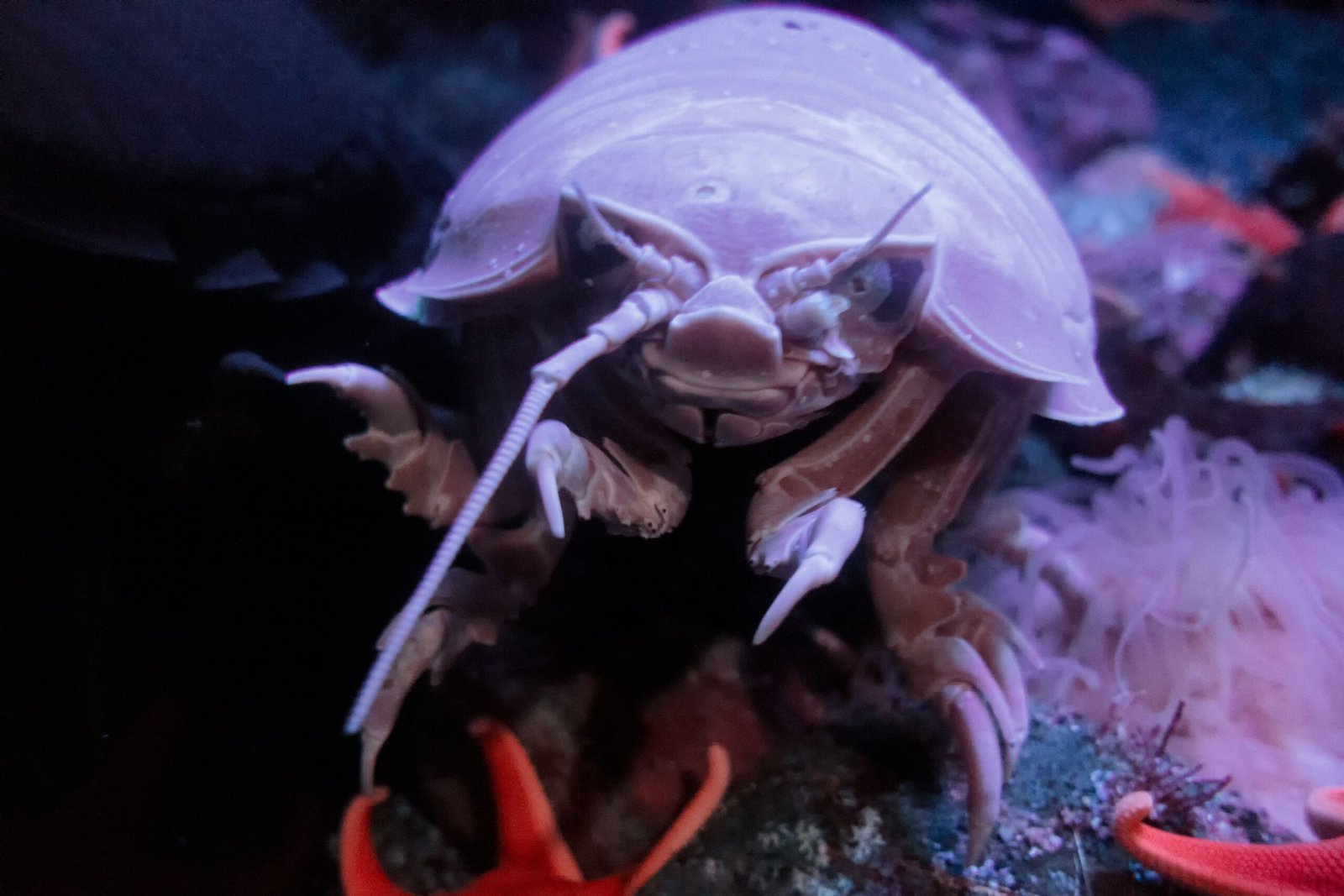
You may have never seen a giant isopod, but you have probably seen a roly-poly, which will give you a good idea of what the ocean creature looks like. The giant isopod has seven pairs of legs and moves slowly, deep in the ocean. These prehistoric-looking creatures are basically enormous underwater pill bugs that can grow to extraordinary sizes.
Deep sea creatures have adapted to this – one Giant Isopod in captivity went five years without eating. They can go for extraordinary periods without eating – in one documented case, a specimen at a Japanese aquarium survived for five years without consuming any food. Their ability to survive without food for years makes them some of the most resilient creatures on Earth. These armored crustaceans patrol the deep ocean floor like living tanks, scavenging whatever they can find.
Blobfish – The World’s Most Misunderstood Celebrity
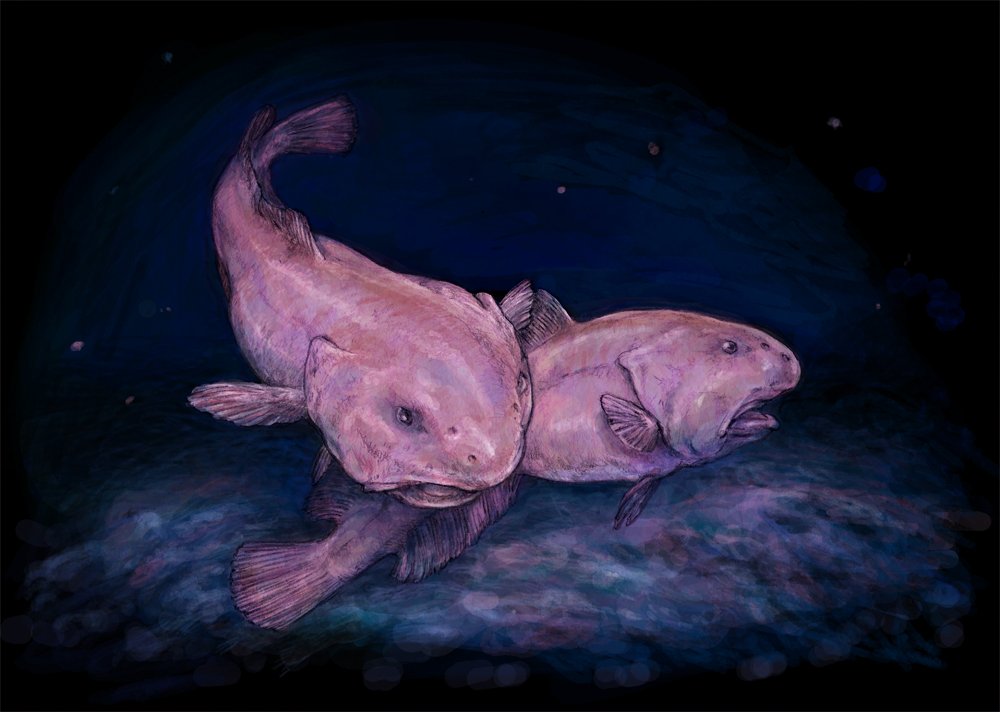
If you were asked to think of the ugliest creature you can imagine, you might picture the blobfish: a pale pink gelatinous blob with a droopy, downturned mouth and large, sagging nose. After being named the world’s ugliest animal in 2013, this hideous fish soared to fame – with memes, songs, soft toys, and even TV characters created in its honor. But this poor fish has been seriously misrepresented.
In its natural habitat – thousands of feet underwater – the misunderstood blobfish looks like a normal fish. Blobfish look almost unrecognizable underwater: These tadpole-shaped fish have bulbous heads, large jaws, tapered tails, and feathery pectoral fins. That’s why blobfish collapse into a squishy mush when they are pulled up to the surface. The famous blobby appearance only happens when these deep-sea fish are brought to the surface, where the lack of pressure causes their bodies to lose their shape completely.
Goblin Shark – Living Nightmare from the Deep
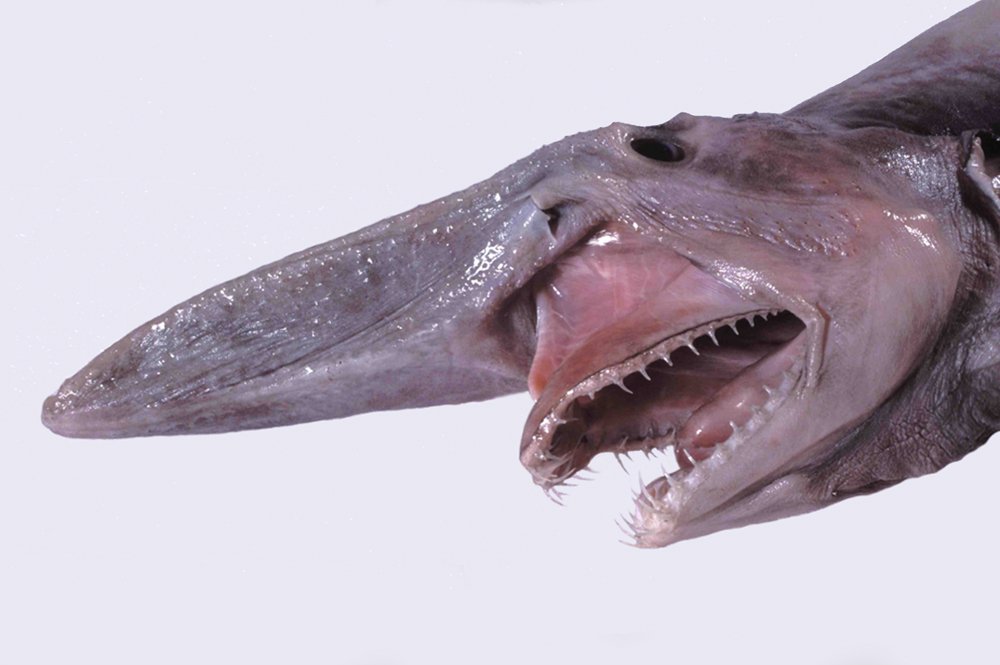
The goblin shark, with its pinkish hue and protruding snout lined with dagger-like teeth, is a nightmare come true. With a snout that resembles a flattened shovel and rows of dagger-like teeth that protrude from its gums, the goblin shark is the stuff of nightmares. This prehistoric predator looks like it swam straight out of a horror movie.
Scientists think goblin sharks hunt prey, such as squid and crustaceans, by detecting changes in electric fields. Once the sharks are close enough, their jaws shoot outward to gobble up the unsuspecting animal. What makes them truly terrifying is their ability to shoot their jaws out like some alien creature, creating a deadly trap for unsuspecting prey. These living fossils have remained virtually unchanged for millions of years.
Anglerfish – Master of Deception
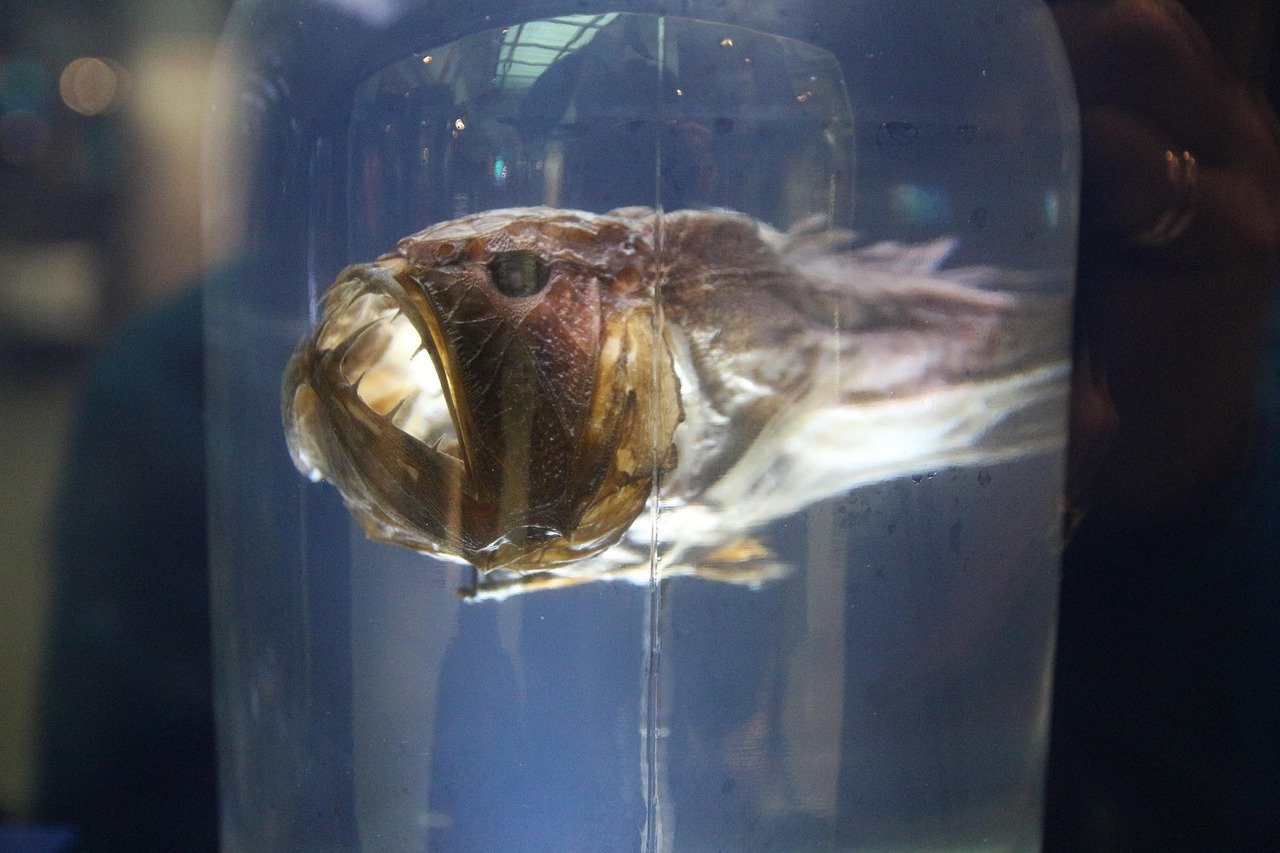
Anglerfish have a large bioluminescent lure used to attract prey in the darkness. These deep-sea predators are like underwater fishing experts, complete with their own built-in fishing rod and glowing bait.
But it’s only the females of the species who hunt. Females are much larger than males – up to 60 times larger – and provide nutrients to their male mates. The male anglerfish literally becomes a permanent parasite, attaching himself to the female and living off her for the rest of his life. This bizarre mating arrangement ensures that when it’s time to reproduce in the food-scarce deep sea, a male is always available.
Sea Pigs – Deep-Sea Vacuum Cleaners
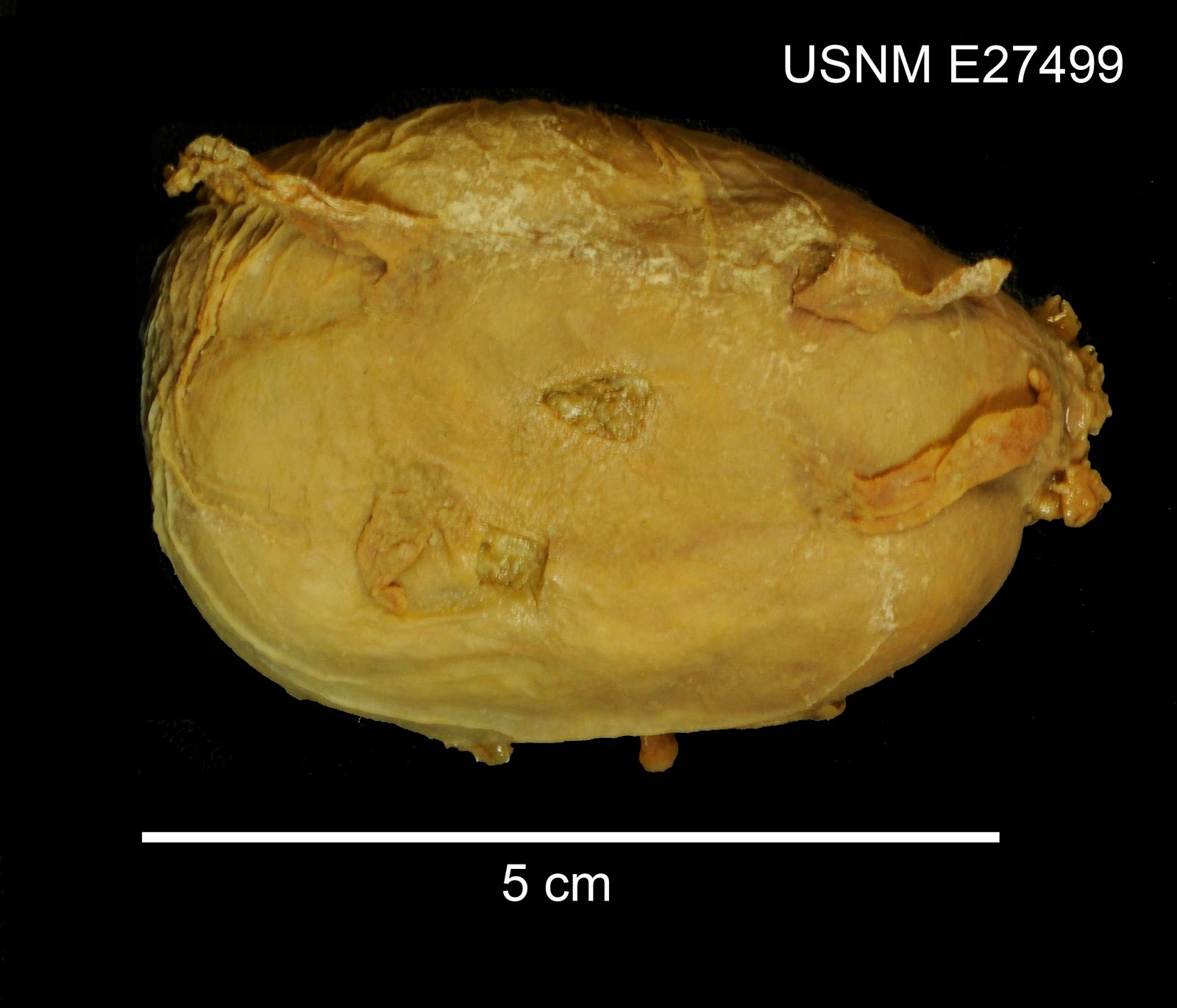
You don’t get much weirder looking than the sea pig, a genus of sea cucumbers that look straight out of Doctor Who. Named for their plump, pink, and rounded bodies, sea pigs are very abundant, but you are unlikely to ever see one, living as they do at depths of over 1,200 to 5,000 metres. These bizarre creatures roam the ocean floor in massive herds like underwater cattle.
This sea cucumber (nicknamed the “sea pig”) was seen gently drifting more than 9,000 feet underwater. Sea pigs survive the intense pressure partly thanks to their flexible body. They move around on leg-like appendages, filtering nutrients from the muddy sea floor. Despite looking completely alien, sea pigs play a crucial role as deep-sea recyclers, processing organic matter that falls from above.
Gulper Eel – The Ocean’s Ultimate Stretch Mouth
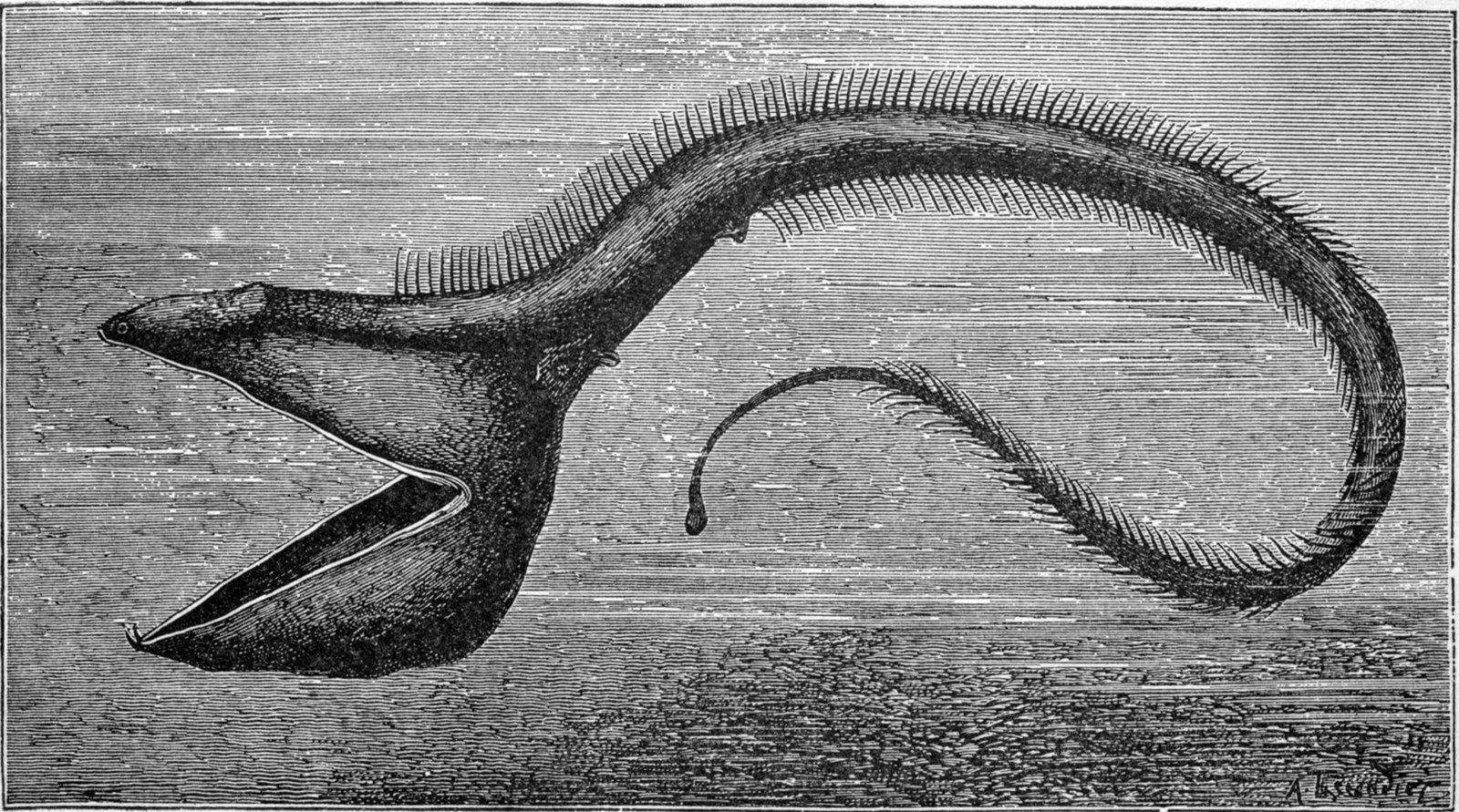
A gulper (or pelican) eel mostly looks like it should – long and sinuous – until it feeds, when it’s more like a balloon on a stick. This denizen of the deep is equipped with enormous jaws that extend backwards from the head, terminating in a pair of elbow-like hinges. It has enormous jaws, a tail that glows pink, and can eat prey bigger than itself.
The gulper eel’s large mouth allows it to engulf prey whole, including fish and invertebrates, adapting well to the scarcity of food in the deep ocean. However, what truly sets the gulper eel apart – and inspired its name – is its gigantic mouth. When hunting, these eels can unhinge their massive jaws and expand their throat like a pelican’s pouch, swallowing prey much larger than themselves. It’s like watching a snake try to eat a watermelon.
Giant Siphonophore – Nature’s Longest String of Life
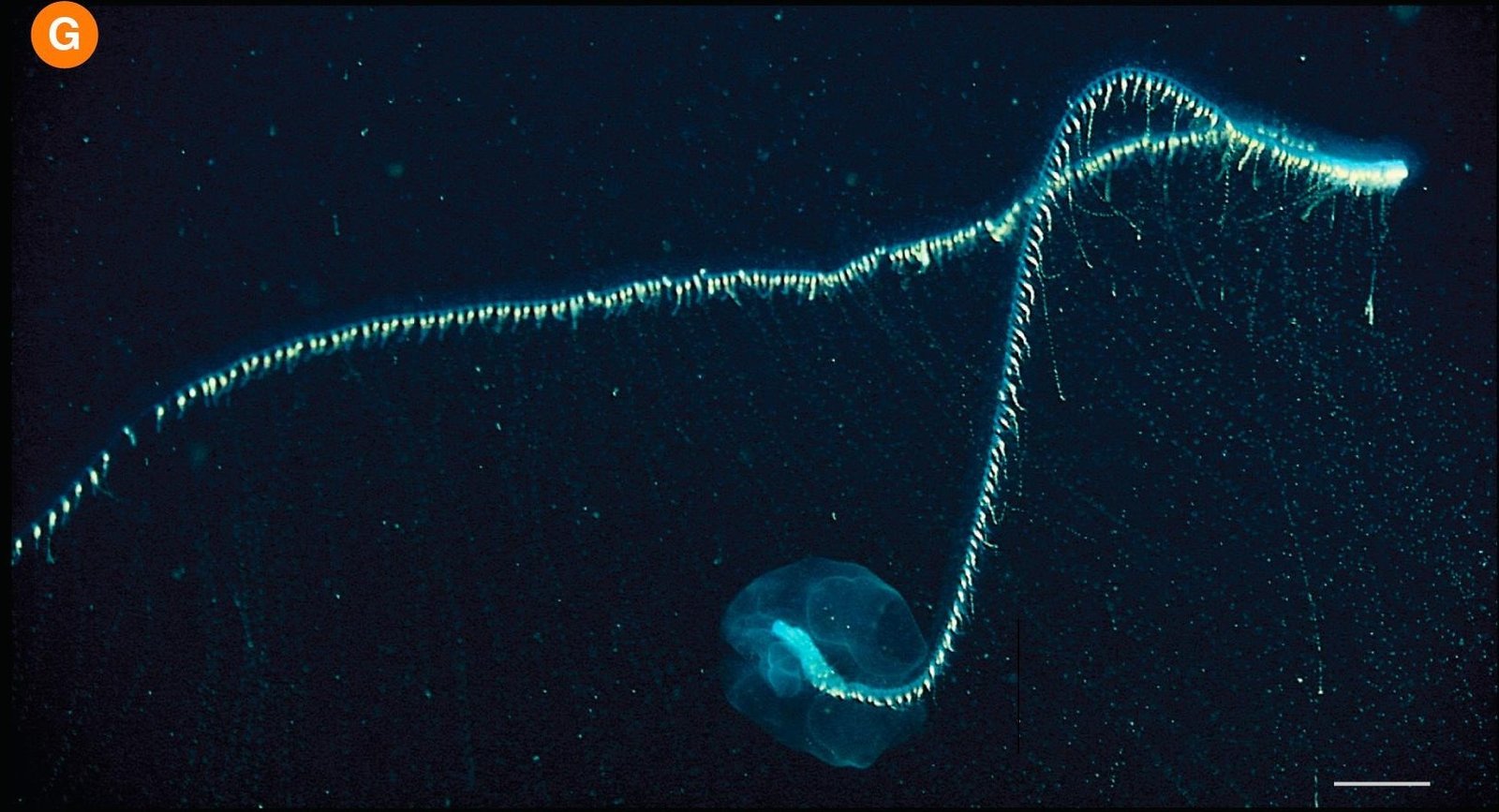
A siphonophore (order Siphonophorae) is a colony of genetically identical polyps, or zooids, that acts like one organism. Each zooid performs a function essential to the survival of the whole colony, such as catching prey, digesting food or reproducing. Siphonophores can grow to extraordinary lengths, with the largest colony on record measuring 154 feet (47 m) long and 49 feet (15 m) in diameter.
Scientists have named more than 175 species of siphonophore, including deep-sea colonies that glow green, blue and sometimes red to attract prey. The giant siphonophore (Praya dubia), for example, is a bioluminescent creature that turns bright blue when it bumps against other objects and animals. These string-of-pearls creatures are longer than a blue whale but thinner than a broomstick, creating one of nature’s most spectacular light shows in the deep ocean darkness.
Giant Spider Crab – Eight-Legged Ocean Giant
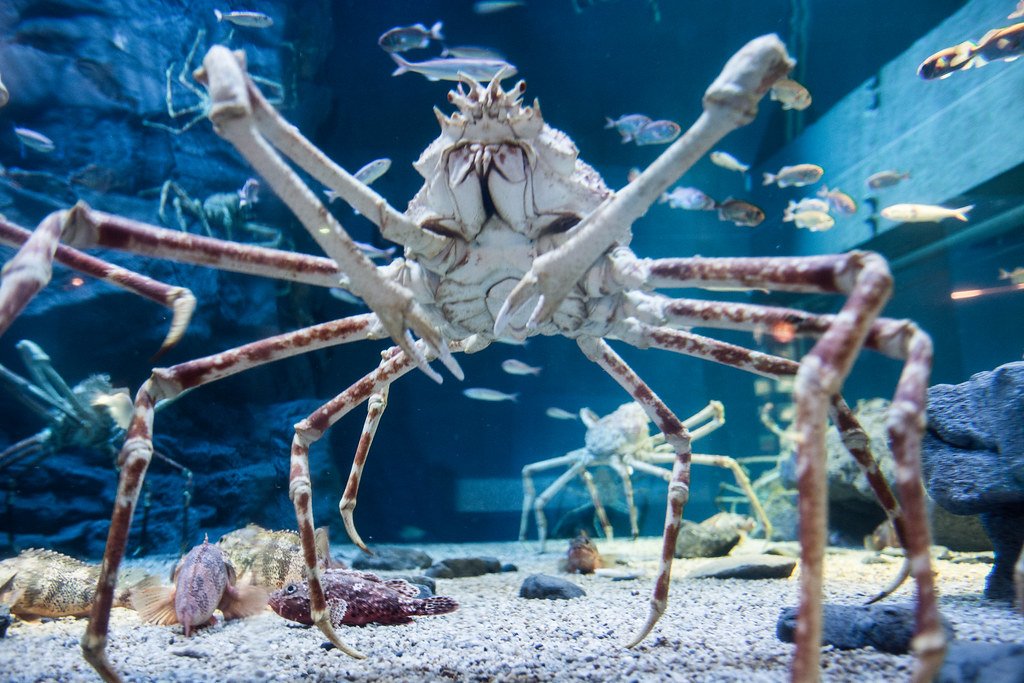
With a leg span of up to 12 feet (3.8 meters), the Japanese spider crab (Macrocheira kaempferi) is the biggest crab in the world. It lives in the Pacific Ocean’s mesopelagic (twilight) zone at depths from 660 to 1,800 feet (200 to 550 meters). The Japanese spider crab has 10 legs, eight of which it uses for walking; the other two legs have claws and are for pinching.
It spends its days walking along the sea floor, scavenging for dead animals and plants. Imagine encountering this massive arthropod during a deep-sea dive – its legs could easily span the width of a small car. These gentle giants are like underwater daddy longlegs, but supersized and living in one of the most hostile environments on Earth.
Frilled Shark – Living Fossil with a Bite
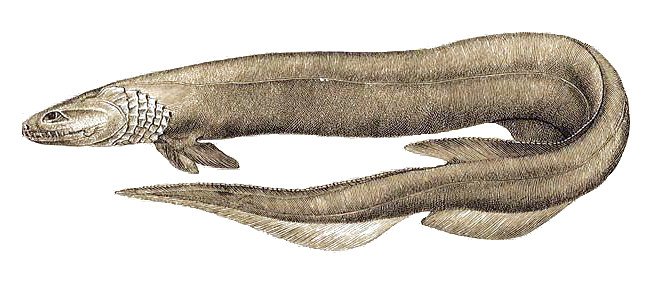
The frilled shark (Chlamydoselachus anguineus) gets its name from the frilly appearance of its gill slits. This deep-sea shark has an elongated, eel-like body that grows up to 6.6 feet (2 m) long, as well as a large, flattened head. It is found worldwide and swims by undulating its body like a snake. The frilled shark is an active predator with several rows of needle-sharp, three-pointed teeth, which it uses to rip up its favorite meal of squid.
Its most distinctive feature is the arrangement of 300 trident-shaped teeth aligned in 25 rows, creating a trap-like mouth perfectly designed to seize soft-bodied prey like squid. Its unusual hunting strategy involves bending its body and striking forward like a snake, swallowing prey whole. This primitive shark species looks more like a sea serpent than a modern shark, representing an ancient lineage that has survived for millions of years.
Mantis Shrimp – The Ocean’s Boxing Champion
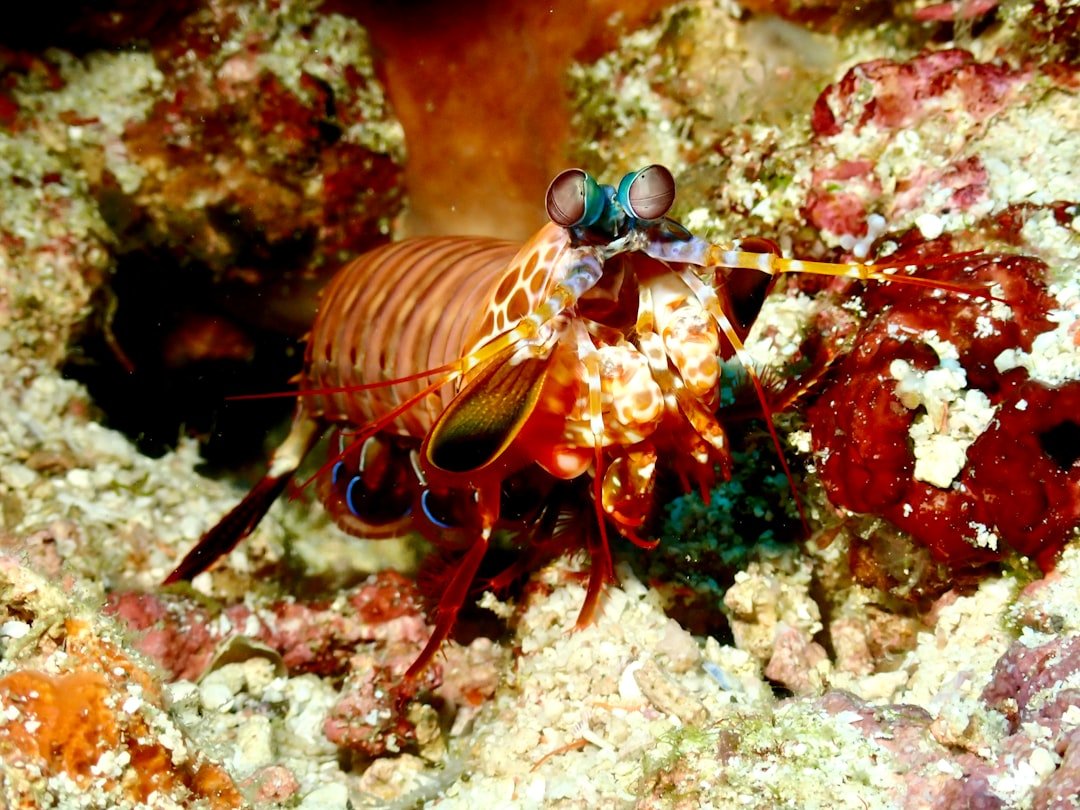
According to Oceana, the international ocean preservation advocacy group, this shrimp’s punch is one of the fastest movements in the animal kingdom – so much so, that it’s strong enough to break an aquarium’s glass wall. But no worries: They mostly only use their fists of steel to break open mollusks and dismember crabs.
Found in the Indian and tropical western Pacific oceans, the peacock mantis shrimp is a candy-colored crustacean known for its ability to quickly “punch” prey with its front two appendages. These rainbow-colored crustaceans have the most complex eyes in the animal kingdom, seeing in colors we can’t even imagine. Their punch is so powerful it creates cavitation bubbles that collapse with the force of a bullet, making them the undisputed heavyweight champions of the crustacean world.
Coelacanth – The Fish That Time Forgot
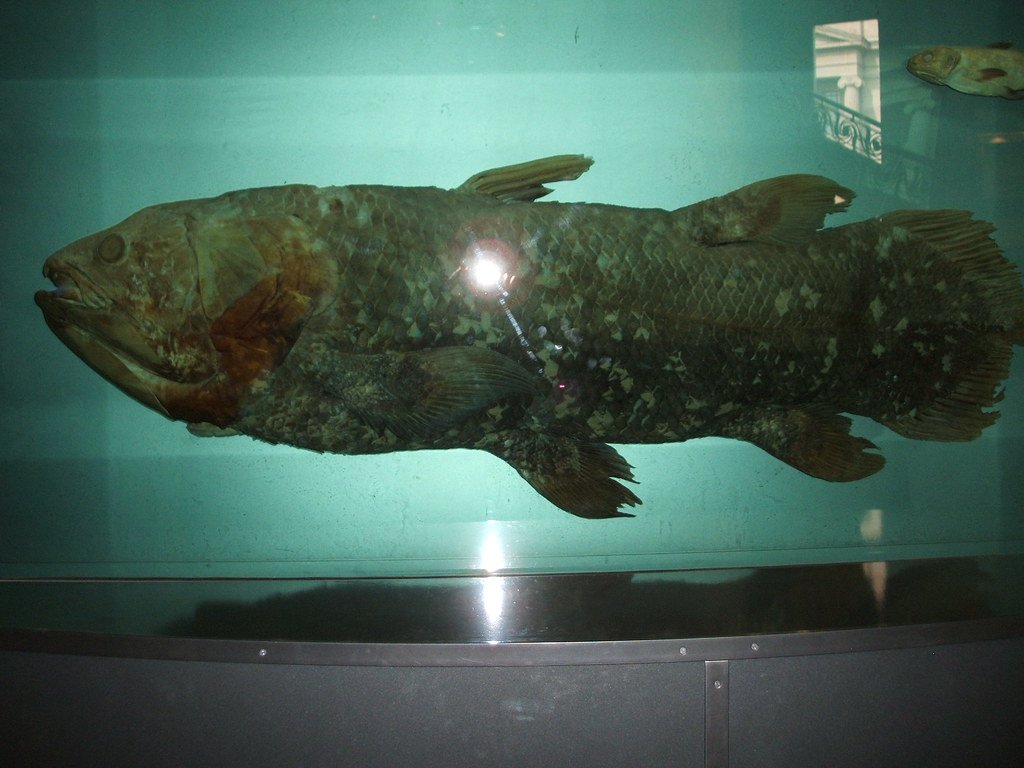
A “living fossil,” this prehistoric fish with lobed fins bridges the evolutionary gap between fish and land animals. Thought to be extinct for over 66 million years, the coelacanth was rediscovered in 1938, causing a sensation in the scientific world.
Coelacanths are slow-moving bottom feeders, using their large snouts to sniff out prey buried in the seabed. The discovery of the first living coelacanth in 1938 was a scientific sensation, proving that some creatures we thought were long gone are still swimming the deep. These ancient fish have remained virtually unchanged for hundreds of millions of years, giving us a window into prehistoric ocean life. Their discovery was like finding a living dinosaur swimming in modern oceans.
Pink See-Through Fantasia – Ocean’s Living Ghost
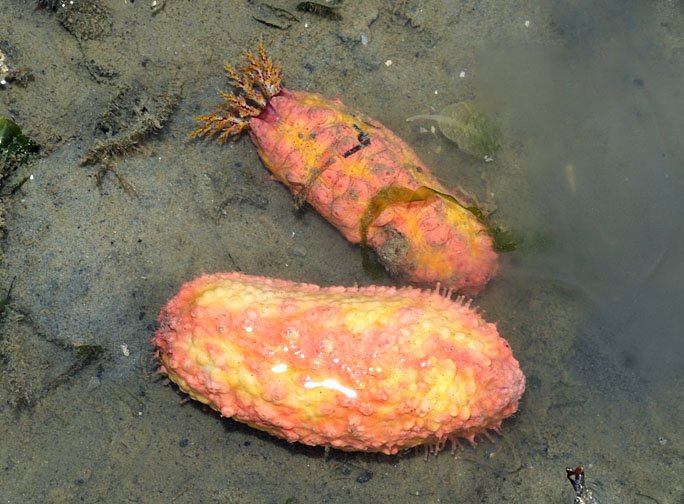
Its name makes it sound like a piece of sexy lingerie, but don’t be fooled: the pink see-through fantasia is a sea cucumber, found about 1.5 miles deep into the Celebes Sea in the western Pacific, east of Borneo. It was only discovered a little over a decade ago, back in 2007, but the curious sea cucumber has a survival tactic that points to its longtime evolution: bioluminescence to ward off predators. The pink see-through fantasia is named for its transparent skin, through which its mouth, anus, and intestines are all visible.
This ethereal sea cucumber looks like a delicate pink ghost floating through the darkness. Its complete transparency reveals all its internal organs, creating a living anatomy lesson that would make any biology teacher jealous. The ability to see right through this creature while it glows softly in the deep sea makes it one of nature’s most beautiful and bizarre creations.
Bigfin Squid – The Ocean’s Alien Dancer
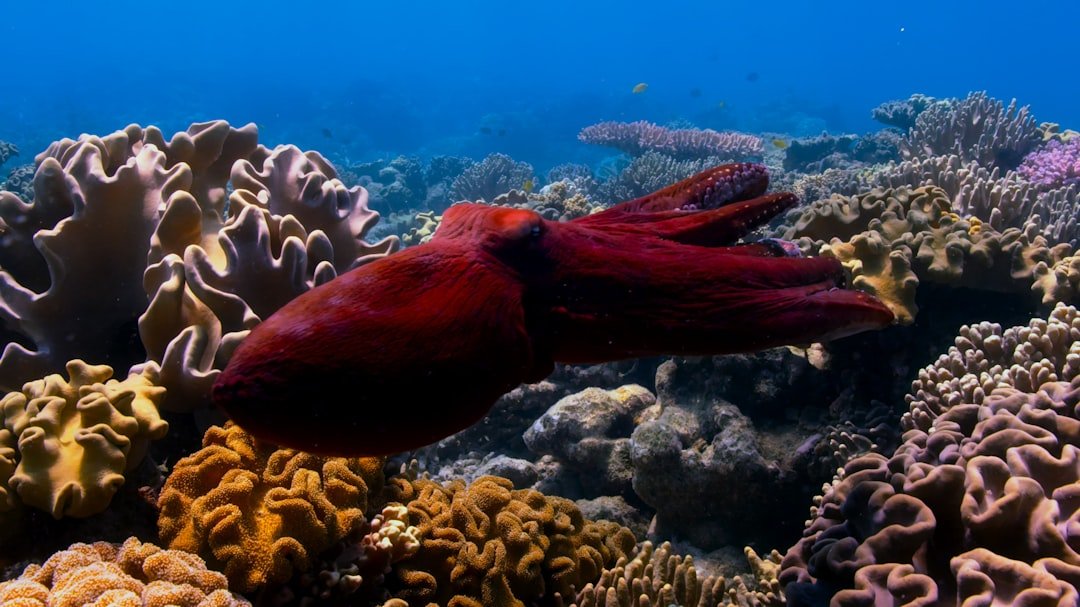
Bigfin squid (Magnapinna) are a genus of rarely seen squid that can grow up to 20 feet (6 m) long – mostly thanks to their trailing arms and tentacles, which can extend 20 times longer than the squid’s body (also known as the mantle) and have distinctive elbow-like bends. As the name suggests, bigfin squid have large fins protruding from their mantle. They are the deepest-dwelling squid known to science, gliding down to depths of more than 20,000 feet (6,000 m).
It’s unclear why bigfin squid have such long arms and tentacles, but scientists think the appendages are covered in microscopic suckers that can trap prey as the squid swim. Only a dozen or so sightings of bigfin squid have been recorded, with three species documented across the world’s oceans so far. These mysterious creatures move like underwater aliens, with impossibly long arms that trail behind them like ghostly ribbons. Their extreme rarity makes every sighting a scientific treasure.
Stoplight Loosejaw Fish – The Ocean’s Stealthiest Predator
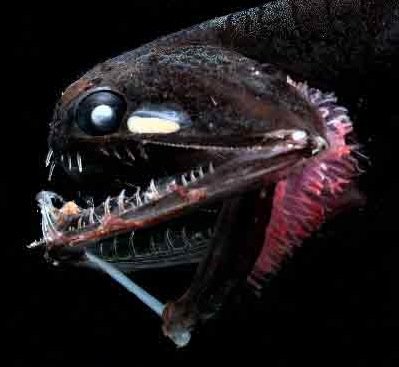
The stoplight loosejaw fish is one of the stealthiest predators in the deep. Its lower jaw is an open frame of bone with no fleshy floor across it, which means it can snap shut very quickly like a mousetrap.
This bizarre fish looks like it was designed by a horror movie special effects team. Its jaw literally has no bottom, creating an open framework of bone that can snap shut with lightning speed. The fish produces red bioluminescent light that most deep-sea creatures can’t see, giving it the perfect stealth advantage. It’s like having night vision goggles in a world where everyone else is blind, making this creature the ultimate underwater assassin.
The ocean continues to surprise us with creatures that challenge our understanding of what’s possible in nature. Meanwhile, researchers from Dalhousie University in Nova Scotia, Canada believe that 91 percent of these marine animals are still unknown to us. Of the 235,000 or so species we do know about, many have adapted to their environment with peculiar camouflage, bioluminescence, and mating habits – leading to some seriously strange appearances. Every deep-sea expedition reveals new wonders that seem more alien than anything Hollywood could imagine. The next time you look out at the ocean’s surface, remember that below those waves lies a world more strange and wonderful than any science fiction story ever written.
What creature surprised you the most?




